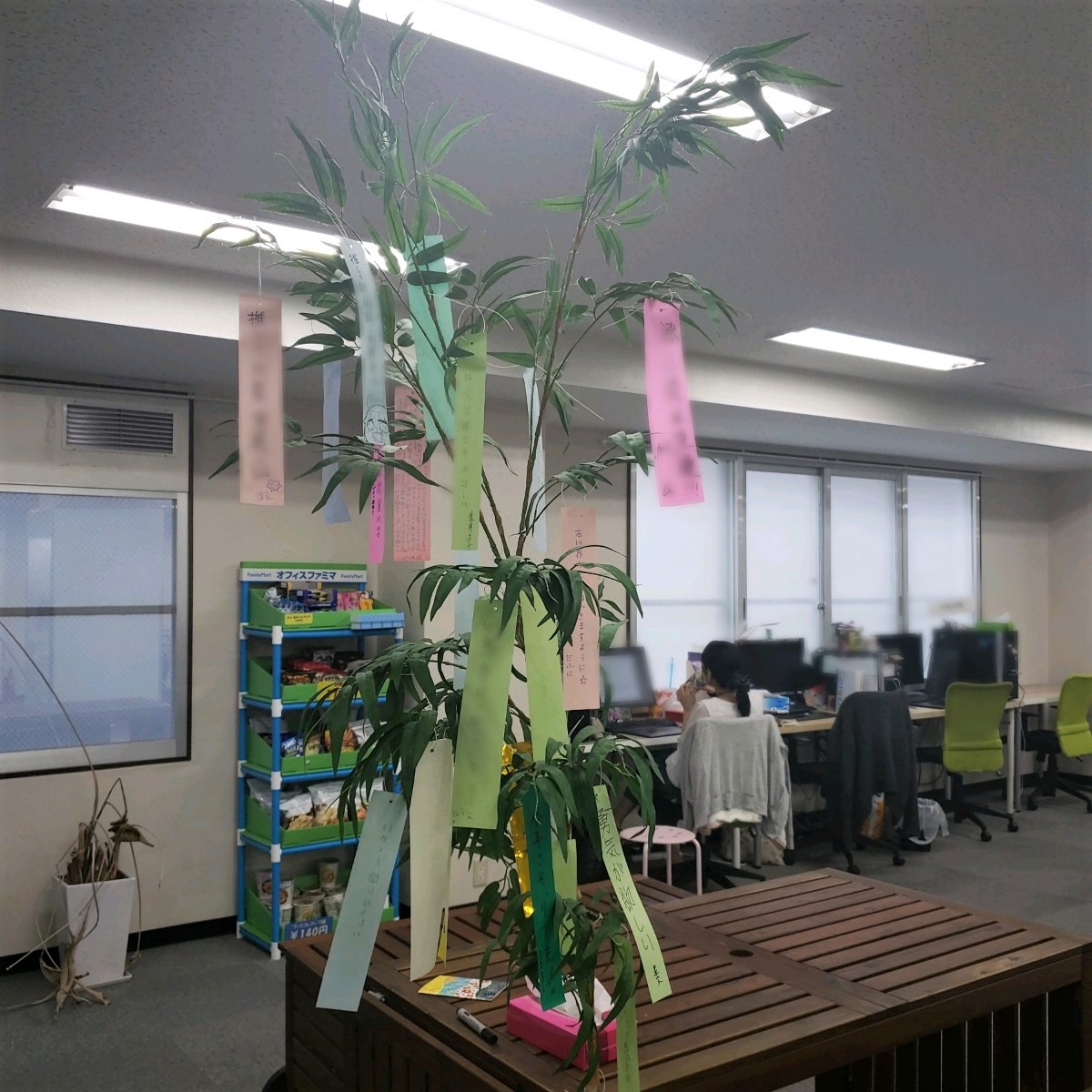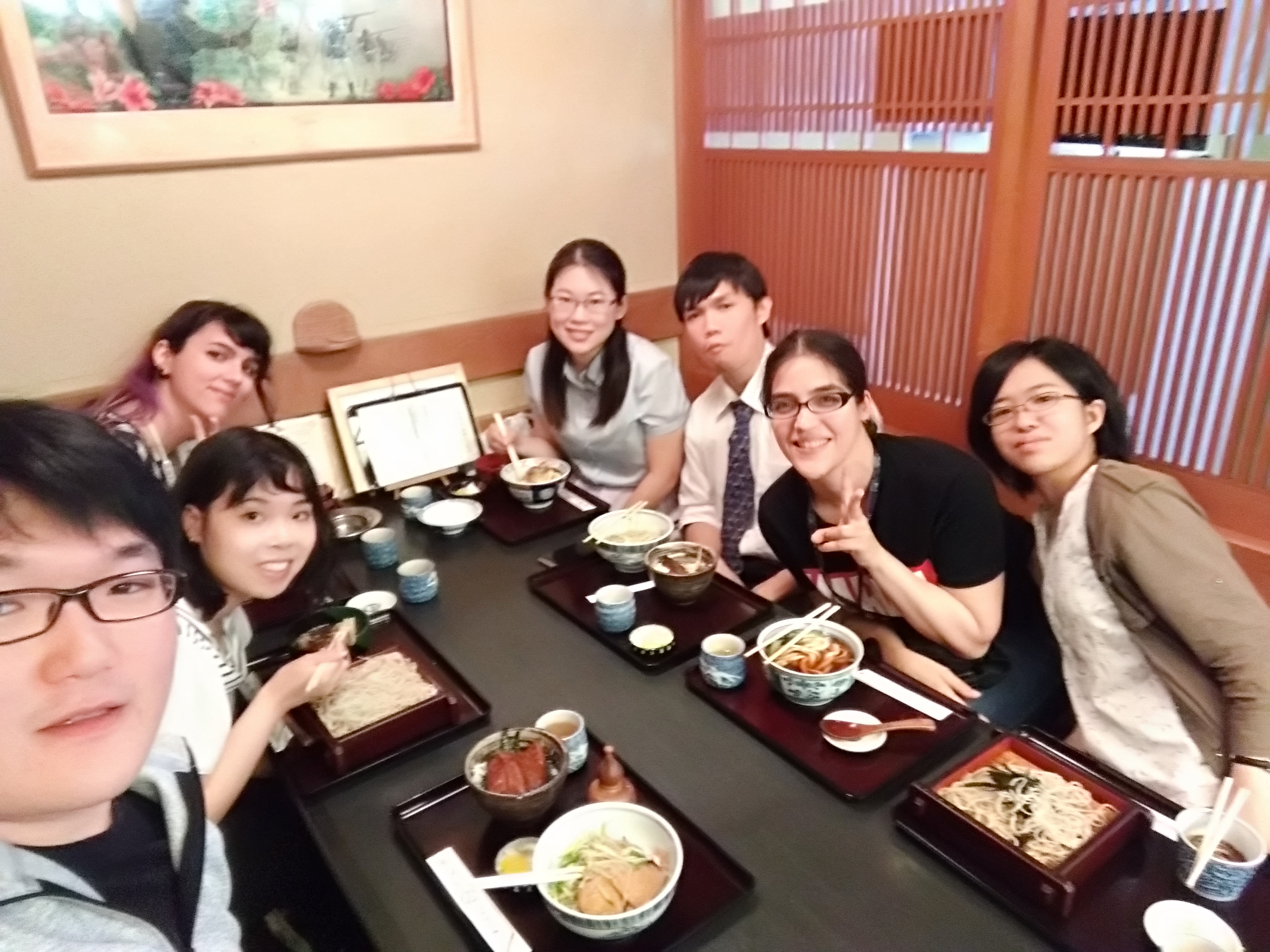【18新人シリーズ⑦】ミニ中国語講座!
*English translation below
こんにちは、新人アーティストのC.Tです。
今回は私のプロジェクト内で行われている「ミニ中国語講座」について紹介します。
皆さんがご存知のように、あまたは外国人社員さんの割合が非常に高いです。中国・韓国・インドネシア・アメリカなど、色んな国の人たちとコミュニケーションをとることができ、それぞれのカルチャーをシェアすることができます。
これまで、あまたは「日本語ランチ」「英語ランチ」などの活動が行われています。この日本語・英語ランチとは、食事をしながら私たち外国人社員は日本語を教えてもらったり、逆に日本人社員さんには英語を教えてあげたり…このランチではお互いの文化でコミュニケーションを取ることができ、私はとてもいいなと思っています!そして英語以外にも、ほかの言語を話せる外国人社員がいます。とくに中国語を話せる方はかなり多いです。中国籍の方だけではなく、東南アジアの社員さんも中国語が通じます。
今さらですが私は中国出身です。そして私が所属しているプロジェクトの日本人の先輩たちは、中国の文化や言葉に興味を持っていて、時に「この日本語は中国語でなんて言うの?」と質問してくれます。なので、私と同じプロジェクトで台湾出身の先輩と2人でよく日本人の先輩たちに中国語を教えあっています。先輩たちの気になる中国語が増えれば増えるほど、毎日定時後、2~3個ずつ中国語を教えることになりました。そういうシンプルなきっかけで、私達のミニ中国語講座が始まりました。
簡単にまとめると、中国語講座は定時後に私と台湾出身の先輩が、日本人の先輩たちに中国語を教えあうミニ講座です!
席の近くにあるホワイトボードを拠点にして、不定期でいくつかの中国語を教えあっています。カジュアルな雰囲気なので、誰でも気軽に飛び込める講座です。
【何を教えるの?】
基本的に先輩たちが興味を持っている言葉の中国語を教えます。最初は好きなものや、日本語でよく話している言葉から始まります。例えば、「炸鸡(zhàjī)=唐揚げ」、「饺子(jiǎozi)=餃子」のような食べ物の単語は人気です。また、日常生活によく使われる言葉だけではなく、「玩家(wánjiā)=プレイヤー」、「抽卡(chōukǎ)=ガチャを回す」など、ゲーム業界にかかわる言葉も教えていきます。
単語だけではなく、簡単な文法も教えています。単語と定例文を組み合わせて教えることで、最初は単語しか話せなかった先輩たちは、徐々に簡単な会話を話せるようになりました!
【どう教えるの?】
一つの言葉を教えるには、大体こういう流れになります↓
1.先輩たちが興味のある言葉(日本語)を私に聞く
2.言葉を中国語に翻訳し発音を言う
3.更に中国語の漢字と発音をホワイトボードに表記する
4.先輩たちが読み繰り返す
口で教えるとなかなか覚えにくいので、教えた言葉を全部ホワイトボードで書き込みます。そして、ホワイトボードが、こうなっちゃいました。。。

この講座を通して気が付いたのは、日本人にとって、中国語は発音が難しすぎることです。まず、簡単に覚えるため、基本的にカタカナで発音を表記します。時々、中国語のピンインで表記することもあります。しかし、日本人が発音できない音がたくさんあります。そのため、発音しにくい・あるいは覚えにくい場合はアルファベットとイラストも使います。
さらに、中国語ではよく使う4つの声調が存在しますが、それをどうすれば日本人に理解してもらえるのか、私と台湾の先輩も大変難しいと苦戦していました。そこで、私は以下の覚え方を考えました。

声調が似ている日本語を取り上げ、中国語の声調に当てはめます。このやり方にしたら、声調はすごくわかりやすく覚えてもらうことができました!
【ミニ中国語講座のここが素敵!】
ミニ中国語講座のおかげで、私は先輩がたとの交流が広がりました。
日本語も中国語も教えあうことで、日本語の知識をはじめ、お互いの文化や、先輩たちの趣味まで、たくさんの話ができました。言葉の勉強から、日本と中国の文化の差異もいろいろ見えてきます。
人に知識を教えあえる場はなかなか少ないので、ミニ中国語講座は、教えることが苦手な私に良い練習の機会にもなりました。相手がわかりやすく理解できるように、教え方や言葉の使い方に関してもいろいろ勉強になりました。
外国人の私にとって、仕事以外にも活躍できる場所があってすごく嬉しいです。
なので、あまたでは国籍や年齢を問わず教えあえる環境が沢山あることが、素晴らしい会社だと思います!
(C.T)
【18 New Faces Series⑦】Mini Chinese Language Classes
Hello, I’m CT, an artist just starting out.
I’d like to introduce the Mini Chinese Language Classes that are going on inside my work project team right now.
As you know, AMATA has an extremely high proportion of foreign employees. This makes it possible to communicate and share cultures between people from a wide variety of countries, including China, Korea, Indonesia, and America.
So far, events like the Japanese Lunch and English Lunch have been held at AMATA. At these language lunches, we foreign employees learn Japanese over our meal, while at the same time the Japanese employees learn English… I think they’re wonderful opportunities for people to communicate with each other about their various cultures. In addition to English, a lot of our foreign employees speak other languages. Chinese speakers make up a particularly large contingent. This includes not only those of Chinese nationality but other employees from southeast Asia too.
In fact, I’m actually from China myself. My Japanese co-workers on my current project are interested in Chinese culture and language, and sometimes they ask me to tell them how to say something in Chinese. That’s why, together with a Taiwanese coworker on the same project, the two of us often end up teaching our Japanese colleagues Chinese. As our colleagues became more and more interested in the Chinese language, every day after work had ended we started teaching them Chinese in small 2~3 person groups. From this simple beginning, the Mini Chinese Language Classes were born.
To put it simply, my Taiwanese coworker and I are offering mini Chinese language classes after work to our colleagues!
Using the whiteboard near the seats as our base, we hold irregular classes teaching various amounts of Chinese. The atmosphere is casual, and anyone is free to drop by and try out the classes for themselves.
[What do we teach?]
Basically, we teach whatever Chinese that people are interested in learning. We started with hobbies and favorite things, or with words commonly used in Japanese conversation. Food vocabulary is a popular category. For example, 炸鸡(zhàjī) means ‘karaage,’ and 饺子(jiǎozi)means ‘gyouza.’ Plus, we teach not only words commonly used in everyday conversation, but also words relating to things like games, such as 玩家(wánjiā), which means ‘player,’ and 抽卡(chōukǎ), which means ‘roll the gacha.’
In addition to vocabulary, we also teach simple grammar. After being taught a combination of vocabulary and example sentences, our colleagues have gradually gone from only being able to say a few words, to being able to hold simple conversations!
[How do we teach? ]
To teach a single word, we use roughly the following flow:
1. We ask (in Japanese) which words people are interested in learning.
2. We translate the word into Chinese and tell everyone how to pronounce it.
3. We write the kanji and pronunciation out on the whiteboard.
4. We have the class read and repeat.
It’s pretty tough to remember things if you only hear it spoken, so we write all the words out on the whiteboard. Because of that, the whiteboard winds up looking like this…

Something I’ve realized while giving these classes, is that Chinese pronunciation is pretty tough for Japanese people. So in order to make it easier to learn, first we break down the pronunciation into basic katakana. Sometimes, we also write down the Chinese words in pinyin. However, there are a lot of sounds that Japanese people can’t pronounce. That’s why we also use drawings and the English alphabet to help with particularly hard-to-pronounce or hard-to-learn words.
There are four tones that are commonly used in speaking Chinese, and my Taiwanese coworker and I had a really hard time trying to figure out how to make these understandable for our Japanese students. The result of our efforts was the following learning method:

*We tried to match up the four tones in Chinese to Japanese as best we could!
Taking examples of similar sounding Japanese words, we matched them up to Chinese tones. Using this method, we were able to make it much easier for our students to understand them!
[This is the best part of the Mini Chinese Language Classes!]
Thanks to the Mini Chinese Language Classes, I’ve had so many more opportunities to interact with my colleagues.
Sharing our languages with each other, I’ve had so many different conversations, covering everything from Japanese language knowledge, to the different aspects of each others’ cultures, to my colleague’s hobbies. Through studying language I’ve also come to see many of the differences between Japanese and Chinese culture.
There are few chances for people to teach one another, and for me, these mini Chinese Language Classes have been an important chance to practice my teaching skills, something I wasn’t very good at. I’ve learned so muchabout how to teach things, and the right way to use words in to make it easy for others to understand.
Especially for a foreigner like me, I’m so happy to have another circle outside work where I can be active.
That’s why I think AMATA, with its many different learning environments for everyone, regardless of age or nationality, is a wonderful company!
(C.T)



